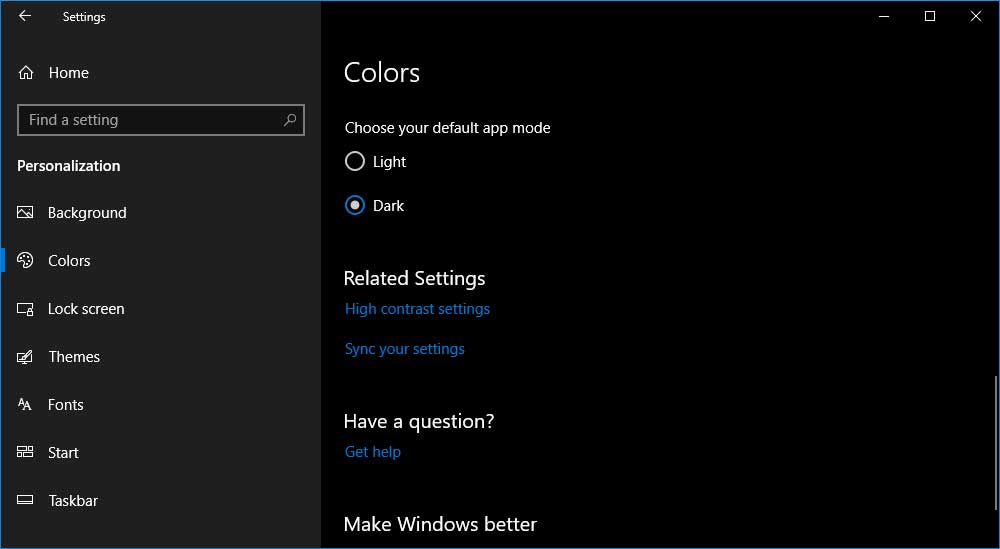Diving into Shadows: A Comprehensive Guide on How to Enable Dark Mode in Windows 10
James March 6, 2024
Introduction:
Windows 10, Microsoft’s feature-rich operating system, caters to a diverse range of user preferences by offering customizable themes and visual styles. One such popular customization is enabling Dark Mode, which transforms the traditional bright interface into a sleek, darkened aesthetic. In this extensive guide, we will explore the intricacies of enabling Dark Mode in Windows 10, providing users with a step-by-step walkthrough and insights into the benefits of embracing this visually appealing and often preferred system theme.
Understanding the Rise of Dark Mode:
Dark Mode has gained immense popularity not only for its stylish and modern appearance but also for its practical advantages. Here are some reasons users opt for Dark Mode in Windows 10:
- Reduced Eye Strain:
- Dark Mode reduces the intensity of light emitted by the screen, alleviating eye strain and minimizing the impact of prolonged computer use on visual comfort.
- Enhanced Readability:
- White text on a dark background can improve readability, especially in low-light conditions, as it reduces the contrast and glare often associated with bright themes.
- Battery Conservation (for OLED Screens):
- On devices with OLED screens, Dark Mode can contribute to energy savings, as OLED pixels emit light individually. In Dark Mode, fewer pixels emit light, resulting in potential power efficiency.
- Visual Appeal:
- Many users find Dark Mode visually appealing, offering a sleek and modern look that can enhance the overall aesthetic of the Windows 10 interface.
Methods to Enable Dark Mode in Windows 10:
Windows 10 provides users with multiple pathways to enable Dark Mode, allowing for flexibility and customization based on individual preferences. The following methods outline how to activate Dark Mode seamlessly:
Method 1: Using System Settings
- Open Settings:
- Press “Windows key + I” to open the Settings app.
- Navigate to Personalization:
- In the Settings app, select “Personalization.”
- Choose Colors:
- In the left sidebar, click on “Colors.”
- Select Dark under “Choose your color”:
- Under the “Choose your color” section, choose the option “Dark” to enable Dark Mode.
- Customize Accent Colors (Optional):
- If desired, you can customize accent colors to further personalize the appearance of Dark Mode.
- Verify the Changes:
- Exit the Settings app and observe the changes applied to the entire Windows 10 interface.
Method 2: Using the Taskbar Context Menu
- Right-Click on the Desktop:
- Right-click on your desktop to open the context menu.
- Choose Personalize:
- Select “Personalize” from the context menu to open the Settings app.
- Navigate to Colors:
- Follow steps 3 to 6 from Method 1 to enable Dark Mode.
Method 3: Using the Action Center
- Open the Action Center:
- Click on the Action Center icon in the taskbar (located near the system clock) or use the shortcut “Windows key + A.”
- Select the Dark Mode Toggle:
- Locate the “Dark mode” toggle in the Quick Actions section and click on it to enable Dark Mode.
Considerations and Additional Tips:
- App Compatibility:
- While most built-in Windows apps seamlessly adapt to Dark Mode, some third-party applications may require manual adjustments or may not fully support the theme.
- Browser Extensions:
- Popular web browsers like Google Chrome and Mozilla Firefox offer Dark Mode extensions that can extend the darkened theme to web pages.
- Taskbar and Start Menu:
- Dark Mode not only affects system windows but also the taskbar, Start menu, and other system elements, creating a cohesive visual experience.
- Scheduled Dark Mode:
- In Windows 10, users can schedule Dark Mode to activate automatically during specific times of the day, ensuring a seamless transition between light and dark themes.
- High Contrast Mode:
- For users with visual impairments or specific preferences, Windows 10 offers High Contrast Mode, an alternative to Dark Mode that provides increased contrast for better readability.
- Community Forums and Discussions:
- Engage with Windows 10 community forums and discussions to share experiences, discover additional customization tips, and troubleshoot any issues related to Dark Mode.
Conclusion:
Enabling Dark Mode in Windows 10 is a simple yet impactful customization that enhances visual comfort, reduces eye strain, and contributes to a sleek and modern desktop experience. By following the comprehensive methods outlined in this guide, users can effortlessly transform the default bright interface into a darker, more stylish theme that aligns with their preferences. Embrace the versatility of Windows 10, optimize your desktop for increased comfort, and immerse yourself in a visually appealing environment. Windows 10 is not just an operating system—it’s a canvas for personal expression and customization, and Dark Mode is a popular choice for users seeking a modern and eye-friendly aesthetic.




